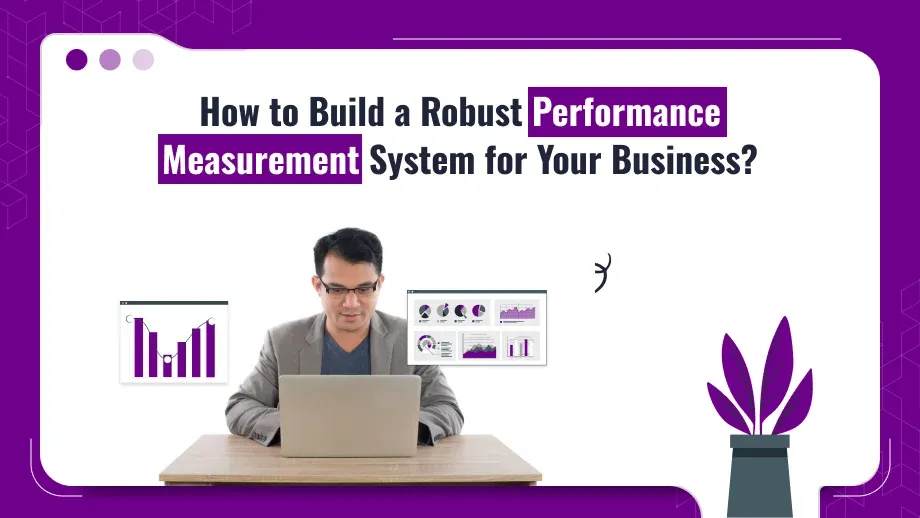
In a highly challenging business climate the importance of team performance management has been a crucial element of achieving organizational success. No matter if you’re managing a small group or overseeing a huge team, having the capability to oversee, manage and enhance group performance management will guarantee that your company can achieve its goals in a timely manner.
This blog article will explore the many aspects of team management with a focus on the function of planning and performance management and the various formats for performance appraisals and the full planning and performance management. No matter if you’re brand new to the concepts, or looking to improve your current methods, understanding these fundamentals are key for improving your team’s effectiveness and productivity.
What is Team Performance Management?
Performance management for teams is the continuous process of establishing objectives and monitoring team performance and making sure that everyone contributes to the overall objectives of the company. This involves identifying any gaps as well as providing feedback. It also involves making necessary adjustments so that team members can achieve their maximum potential.
The effective management of team performance requires an amalgamation of management, planning and the proper instruments. Teams can stay flexible, focused and motivated through a continuous alignment of their individual performances with broader corporate goals.
Why Planning is Essential for Team Performance Management
One of the fundamental elements of team performance management of your team is a proper plan and management. If there isn’t a plan that’s concrete put in place, it’s virtually impossible to assess how an organization is doing and to adjust as needed.
1. Setting Clear Goals and Expectations
The first step is to establish specific goals that are measurable, reasonable pertinent, time-bound (SMART) objectives to the entire team. This ensures everyone is aware of what they’re striving to achieve. In integrating these goals into the vision of the company helps keep the team engaged and focussed.
2. Role Assignment and Resource Allocation
Effective planning involves assigning work based on each individual’s strengths and weak points. A properly-structured team will have clear roles and responsibilities that are compatible with the other, and allow everyone to use their strengths to the advantage for the group as a whole.
3. Creating Performance Benchmarks
When roles are set the creation of benchmarks permits constant evaluation of the performance. They are a good indicator of whether the team is actually on the right track to achieve its objectives. When they regularly check in with the benchmarks set, managers will be able to make sure that their team is heading toward the desired direction.
The Role of Performance Appraisal Formats in Managing Teams
Following initial preparation, reviewing the team’s performance is crucial. This is when the Performance Appraisal Forms become necessary. Performance appraisals are formal evaluations which are designed to help managers evaluate the performance of an employee and their contribution to the organization. If used at a group or group level, these types of formats offer an orderly method to evaluate personal performance as well as group contributions.
1. 360-Degree Feedback
The most frequently employed Performance Appraisal Formats includes the 360-degree feedback technique. This format collects feedback from colleagues or supervisors as well as subordinates. It provides a complete assessment of the performance of an employee. This is especially useful for teams since it can be used to assess not only personal contributions, as well as how the team members work together and with one.
If, for instance, team communications or collaboration are lacking In this case, 360-degree feedback could reveal the issues and provide suggestions for improving team dynamics.
2. Self-Evaluation Formats
Self-evaluation is yet another commonly employed appraisal method that allows employees to evaluate their performance using predefined guidelines. Self-evaluation is not always a good idea, and can result in biased outcomes but it also encourages members of the team to be accountable for the roles they play and evaluate the performance of their team members. Within the context of managing teams, self-evaluation could identify gaps between what people think they know and the reality, and lead to discussions regarding improvements areas.
3. Key Performance Indicators (KPIs) and Metrics-Based Reviews
A different effective performance Appraisal Methodology is the review based on metrics, that relies on the predefined KPIs for measuring performance in a non-biased manner. Utilizing KPIs such as task completion rates as well as collaboration quality and the efficiency of problem solving, managers are able to assess team members based on tangible accomplishments.
KPIs can be extremely useful for monitoring team performance since they aid in determining whether the team has achieved the goals of its group. The KPIs must be tied to the company’s larger goals and ensure that employees’ work directly affects company success.
Maximize your team’s productivity with effective team performance management.
Set clear goals, monitor progress, and foster better collaboration.
The Performance Management Process: A Continuous Cycle for Team Success
The Performance Management Process isn’t a single occasion; it’s a continuous routine that helps managers maintain their teams’ progress. This procedure is made up of a number of key phases:
1. Planning and Goal Setting
Planning is the basis of The Performance Management Process. In this stage, the teams and managers work together to set personal and team goals which are in line with the company’s targets. The next step is to define KPIs as well as setting deadlines and defining expectations for achievement.
The significance of this step can’t be understated. It makes sure that each team member is aware of their roles as well as the deadlines of their projects and also how their tasks are integrated within the bigger strategy of the business.
2. Continuous Monitoring and Feedback
When the targets set, once the goals are set and the goals are set, the next step is to continuously monitor the performance. This phase of the Performance Management Process focuses on continuous monitoring and instant feedback that allows managers to spot areas of improvement early on and take appropriate action to correct them.
Feedback is an important role in this. Instead of waiting until an annual evaluation managers must provide ongoing feedback so that teams are able to quickly adapt to new challenges and opportunities.
3. Formal Evaluation and Appraisal
After the cycle of performance the formal evaluations will be conducted by using the certain Performance Appraisal Formats. The appraisal does not just focus on performance of individuals, it also assesses the way in which the group performed together. The aim is to present a an extensive review of the individual’s achievements as well as team contribution.
At this point, it’s crucial to keep a record of the evaluation results and utilize the results to make plans for future enhancement.
4. Development Plans
Development plans, post-appraisal and other forms of appraisal These plans are created in order to aid team members and employees improve. They could include mentoring programs, training and new tasks for team members to improve their capabilities.
The development plans can be extremely beneficial when it comes to managing team performance since they can prepare your team to meet future challenges, through identifying weaknesses and encouraging development.
5. Reward and Recognition
Rewarding and recognizing high-performing employees is vital to keep morale high. The offering of financial incentives, promotions and even praise verbally inspires individuals to strive for excellence. Within The Performance Management Process, reward mechanisms should be tied to the outcomes of appraisals and to plan of development for fairness and accountability.
The Importance of Flexibility in Team Performance Management
The most important component of modern team management is the flexibility. When businesses change as do their demands as well, so teams have to be prepared to change. This is why the hybrid model of management performance come into the picture, in which certain appraisal and performance measures are adapted to the needs of the team. styles are tailored to fit the specific needs of each team.
As an example, given the increased use of remote and hybrid working models, conventional methods for managing performance that were based in offices might no longer be applicable. Teams that work across multiple regions or time zones could gain from a mixture of self-evaluation and metrics-based assessments to adapt their workflows to different environments.
Emerging Trends in Team Performance Management
1. AI and Data Analytics in Performance Management
One of the most significant changes that are affecting team performance management is the use of AI and analytics using data. This technology allows to track more accurately the performance of team members, while minimizing errors made by humans and providing more insight into the team’s efficiency.
2. Personalized Performance Appraisal Formats
The business world is moving toward specific Performance Appraisal Forms specifically tailored for specific areas, jobs, or even team dynamic. This is especially beneficial for teams with a variety of roles and roles, in which a standard method of appraisal for performance may not work.
3. Real-Time Performance Management
Performance management and planning in real-time is another trend growing in popularity. Businesses are shifting away from periodic reviews, and instead adopting continuous performance management systems that give instant feedback as well as rapid direction adjustments.
Challenges and Solutions in Team Performance Management
While there are many benefits to managing team performance however, there are challenges for managers to have to face. Examples:
- Information Overload: With the many performance and KPI metrics that are available, it is impossible to monitor and interpret all the information. It is best to focus on the metrics that are most pertinent which are in line with the business’s objectives.
- In Appraisals, Bias: Another problem is the risk of biased appraisals of performance. This solution employs various appraisal methods, including 360-degree feedback self-evaluation and reviews that use metrics to get an accurate and comprehensive evaluation.
Conclusion
Management of the team’s effectiveness is essential to ensure the success of your business, particularly in today’s rapidly changing and competitive market. Focusing on effective managing performance and planning by selecting the most appropriate Forms of Performance Appraisal as well as following a clear performance Management process, organizations are able to build teams with high performance that always deliver outstanding outcomes.
If you’re managing a smaller department or managing multiple teams investing your time and money in team performance management is crucial to unlock the key to unleashing the full potential of your team. When new developments emerge like AI integration, real-time management and more making sure you are flexible and flexible can ensure that your team is on top of the game.
Now is the time to begin optimizing the performance of your team. Begin in integrating these tactics in your approach to management, and then watch your team’s efficiency increase.





